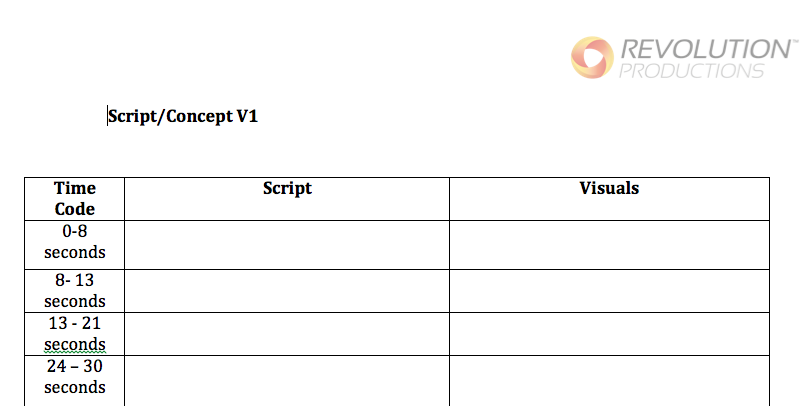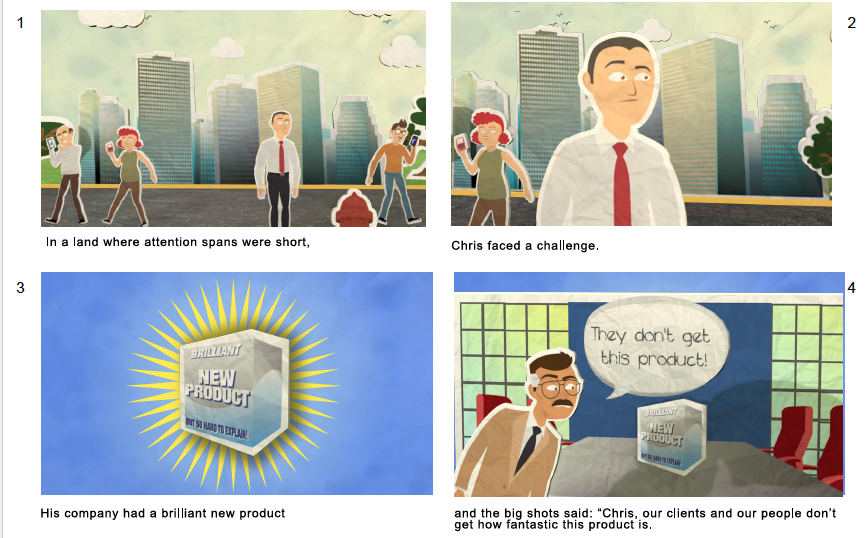Revolution Productions’ Creative Director Marta Ordeig shares her expert tricks and production tips on producing successful online marketing videos.
Producing a successful marketing video that not only entertains, but returns results is no easy task, especially when you have a limited time frame of 90-120 seconds. Revolution Productions’ own Creative Director, Marta Ordeig explains, “Producing an explainer video is it’s own special trade that largely differs from the standard video production process.”
With a background in video production, Marta has an extensive understanding of the video industry. Before coming to Revolution, Marta has worked in TV news and runs her own Film Festival that has been in Berlin and Barcelona. As our Creative Director, she ensures that clients receive the highest quality video that is strategically produced to help them achieve their specific goals. Her day-to-day responsibilities include delivering creative pitches and revising the creative material for each step of the production process: script development, design concepts, storyboards and production.
When working with animated explainer videos, she explains that while there are a lot of techniques that you learn in live-action, producing an animated explainer video is very much a whole different ballgame.
“With an animated marketing video, you have to pack a ton of information into less than two minutes in addition to thinking about what content can be best communicated solely with imagery. You also have to consider the difference audiences. With animation, you are dealing with companies who have a complicated product or process that can’t be presented with live-action footage.”
Creating a successful marketing video begins with the script. This is the foundation for the video and is typically written in a three-column format that outlines the “Time Code” “Script Text” and “Visuals.
When a writer is drafting a script, they can’t just simply write out a dialog. They must also ways be thinking in parallel about what the visuals will be. The visuals and dialog can’t be seen as two different parts, they have to complement each other. That means the visuals must be in sync with the voice over (VO) but they have the flexibility to communicate more than what the VO is saying; the visuals add another layer to the production.
Marta weighs in with her top script writing tips:
- Write both the text and visual directions simultaneously. Don’t try to do just one or the other
- Read the script text out loud at a smooth and consistent tempo 2-3 times to make sure you stay within the time frame
- Don’t limit yourself creatively. With animation you have the freedom to alter reality, which presents a unique opportunity to create really interesting transitions
- Take your time to consider the key message and exactly who is the audience: which media they consume, which tone they like, which channels they use, etc. It is always better to create simple and specific videos tailored to a certain audience rather than trying to explain too many different things to a broad range of targets.
Once the script is finalized and approved, it moves onto the design process where the characters and design style is decided. For example, for one of our own videos, we decided to use a 3D Motion Graphic style with a crumpled paper look. Our initial characters looked like this:
During the design concept stage, we also define what the backgrounds will look like:
After the design concept is approved, the visuals as described in the script are set into a storyboard next to the content frame by frame:
Then, the video moves into production. At this stage the storyboard will come to life through the talents of professional animators and voice over artists.
See the full video here:
Interested in learning more about our process? Don’t hesitate to contact us!




